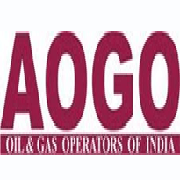-
China renewable power waste worsens in 2016 – Greenpeace
The amount of electricity wasted by China’s solar and wind power sectors rose significantly last year, environment group Greenpeace said in a research report published Wednesday, despite government pledges to rectify the problem.
China has promised to improve what it called the “rhythm” of grid and generation capacity construction to avoid “curtailment,” which occurs when there is insufficient transmission to absorb power produced by renewable projects.
But Greenpeace said wasted wind power still reached 17 percent of the total generated by wind farms last year, up from 8 percent in 2014, and was as high as 43 percent in the northwestern province of Gansu. The amount that failed to make it to the grid was enough to power Beijing for the whole of 2015, it added.
Solar curtailment across China rose 50 percent over 2015 and 2016. More than 30 percent of solar power in Gansu and neighbouring Xinjiang failed to reach the grid.
Greenpeace said earlier that total solar and wind investment between now and 2030 could hit $780 billion.
But, rising levels of waste cost the industry as much as 34.1 billion yuan ($4.95 billion) in lost earnings over 2015-16, it said Wednesday.
China’s energy regulator said late on Tuesday that it aims to raise the share of non-hydro renewable electricity delivered to the grid to 9 percent of the total by 2020, up from 6.3 percent last year and 5 percent in 2015.
It said renewable capacity hit 34.6 percent of the national total in 2016, while actual generation from renewable sources – including major hydro projects – stood at 25.4 percent of the total last year.
China produced 12.3 billion kWh of solar power in the first quarter of 2017, up 31 percent year-on-year but accounting for just 1.1 percent of total generation over the period, official data showed on Monday. Wind hit 62.1 billion kWh, 4.3 percent of the total and dwarfed by the 77.9 percent share occupied by thermal electricity.
Grid construction has slipped behind, with China focusing on expensive ultra-high voltage (UHV) routes that better suit large-scale power generation projects.
“Upgrades to the system are urgently needed, including a more flexible physical structure of the grid, efficient cross-region transmission channels and smart peak load operation,” said Greenpeace climate and energy campaigner Yuan Ying.
Many regions have used renewables as back-up electricity sources during peak periods, and it falls idle when power use drops. Provinces are now lobbying for UHV connections allowing them to sell surplus power to other regions.
Executives at a Shanghai conference on Wednesday said curtailment was eroding cash flows and discouraging investment, and while China was looking for solutions, the answer was likely to be technological.
“If you are in remote areas and there’s no grid around, you build storage – transformer stations and storage plants that can make the energy available at a later stage,” said Andreas Liebheit, president of Heraeus Materials Technology Shanghai, which produces specialist materials for solar panels. Christian Dvorak Authentic Jersey
Share This



























































































